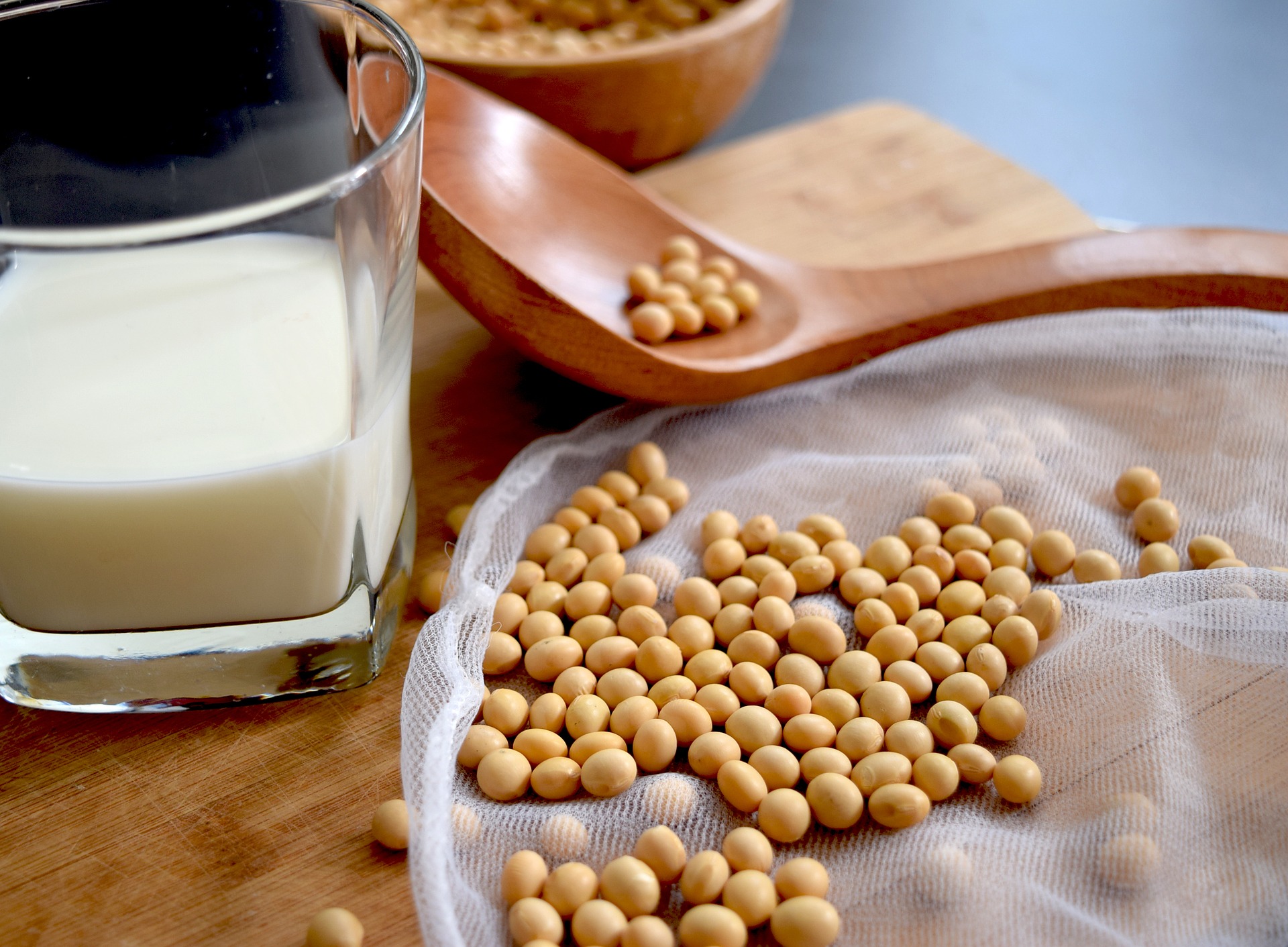Soy gets a bad rap (and you definitely have to watch out for soy products that are processed and full of gluten, GMOs or other pollutants), but it has some serious potential benefits that deserve recognition.
To explain, I’ll have to give you a bit of background information, so bear with me.
The Women’s Health Initiative study observed links between hormone replacement therapy and higher risk of heart disease, breast cancer and other health issues in women.
They concluded that safer solutions must be found.
Estrogen does have some positive effects—namely, reducing risk of hip fracture and improving menopausal symptoms—but it’s also associated with blood clots in the brain, lungs and heart, and increased risk of breast cancer.
The ideal solution? Something called a “selective estrogen receptor modulator,” which in simpler words is a substance that would absorb estrogen where it does the body good (like in bone tissue), but block it where it does harm (like in breast tissue).
The really interesting thing is that while the pharmaceutical industry is trying to create such a substance, nature (as usual) is way ahead of the game. Phytoestrogens found in plants (such as genistein in soy) appear to serve the exact function we’re looking for.
You see, this genistein has a similar structure to estrogen, yet prevents breast cancer growth usually associated with increased estrogen intake.
How is it even possible for a compound to both block estrogen binding in breast tissue and act as estrogen in other tissues, like bone?
Great question!
Researchers answered it when they discovered two distinct estrogen receptors in the human body. This other kind of estrogen receptor has been named “estrogen receptor beta” to differentiate it. Here’s how it works:
Soy phytoestrogens prefer to bind to beta receptors over alpha ones (the opposite behavior to our bodies’ estrogen). When researchers fed test subjects cooked soybeans, the genistein in their bloodstream appeared to activate the beta receptors in the body—but not the alpha.
That’s the key.
Why?
Because the uterus, liver and other parts of the body where estrogen pills tend to cause fatal blood clots contain alpha receptors—but not beta. So when women go on hormone replacement therapy, that estrogen binds to these alpha receptors, often causing those serious health complications I already mentioned.
Soy phytoestrogens consumed in a normal diet, on the other hand, support bone health (bone tissue contains beta receptors), improve menopause symptoms and reduce risk of ovarian cancer, yet do not have a negative impact on endometrial (uterus) or breast health.
That’s so cool!
Since soy consumption is associated with improved bone mass, researchers decided to look at potential for bone loss prevention.
They looked at the effects of soy milk consumption versus the use of a progesterone cream. While the progesterone group did better than the control group, which lost significant bone mineral density in the spine over two years, the soy milk group definitely won. Those test subjects ended up with better bone density than when they started! Researchers found similar results when they looked at hip bone health.
It would be reasonable, then, to assume that soy consumption also protects against fractures—and yes, gorgeous, it does!
One serving of soy per day appears to be linked to significantly lower bone fracture risk. Even better than soy milk? Whole soy foods like tempeh or edamame.
There haven’t been any studies on supplements made from soy, however, so I wouldn’t advise taking those. As usual, nature has everything we need—without any pills or powders—and I encourage you to stick with whole foods to get all the nutrition your body needs.
xx
Donna
Resources:
Wei P, Liu M, Chen Y, Chen DC. Systematic review of soy isoflavone supplements on osteoporosis in women. Asian Pac J Trop Med. 2012 Mar;5(3):243-8.
Ollberding NJ, Lim U, Wilkens LR, Setiawan VW, Shvetsov YB, Henderson BE, Kolonel LN, Goodman MT. Legume, soy, tofu, and isoflavone intake and endometrial cancer risk in postmenopausal women in the multiethnic cohort study. J Natl Cancer Inst. 2012 Jan 4;104(1):67-76.
Myung SK, Ju W, Choi HJ, Kim SC; Korean Meta-Analysis (KORMA) Study Group. Soy intake and risk of endocrine-related gynaecological cancer: a meta-analysis. BJOG. 2009 Dec;116(13):1697-705.
Vidal O, Kindblom LG, Ohlsson C. Expression and localization of estrogen receptor-beta in murine and human bone. J Bone Miner Res. 1999 Jun;14(6):923-9.
Mueller SO, Simon S, Chae K, Metzler M, Korach KS. Phytoestrogens and their human metabolites show distinct agonistic and antagonistic properties on estrogen receptor alpha (ERalpha) and ERbeta in human cells. Toxicol Sci. 2004 Jul;80(1):14-25.
Originally published at wilddonna.com


